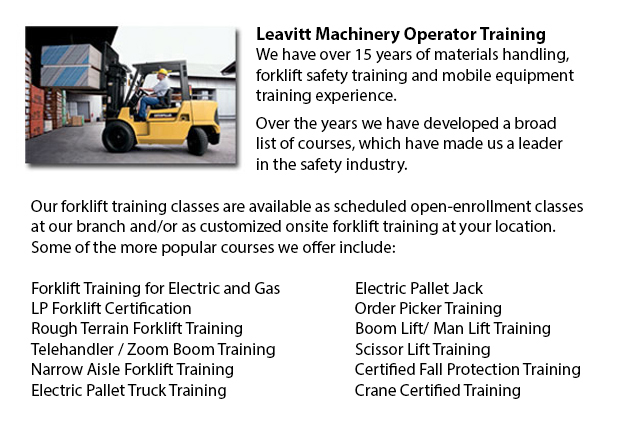
Aerial Lift Training Burlington - Aerial lift trucks might be utilized to accomplish a lot of distinctive duties executed in hard to reach aerial places. A few of the tasks associated with this type of lift include performing regular upkeep on structures with elevated ceilings, repairing phone and utility lines, lifting burdensome shelving units, and trimming tree branches. A ladder could also be used for many of the aforementioned tasks, although aerial hoists offer more safety and strength when correctly used.
There are a lot of versions of aerial hoists existing on the market depending on what the task required involves. Painters often use scissor aerial hoists for example, which are classified as mobile scaffolding, effective in painting trim and reaching the 2nd story and higher on buildings. The scissor aerial lifts use criss-cross braces to stretch out and lengthen upwards. There is a platform attached to the top of the braces that rises simultaneously as the criss-cross braces elevate.
Container trucks and cherry pickers are a different kind of aerial lift. They contain a bucket platform on top of an extended arm. As this arm unfolds, the attached platform rises. Lift trucks use a pronged arm that rises upwards as the handle is moved. Boom lift trucks have a hydraulic arm which extends outward and raises the platform. Every one of these aerial lifts require special training to operate.
Through the Occupational Safety & Health Association, also labeled OSHA, education courses are on hand to help make certain the workers satisfy occupational standards for safety, system operation, inspection and maintenance and machine weight capacities. Workforce receive certification upon completion of the course and only OSHA qualified employees should run aerial lifts. The Occupational Safety & Health Organization has developed guidelines to maintain safety and prevent injury while utilizing aerial lift trucks. Common sense rules such as not utilizing this apparatus to give rides and making sure all tires on aerial platform lifts are braced so as to prevent machine tipping are mentioned within the guidelines.
Unfortunately, figures expose that more than 20 aerial lift operators die each year when operating and almost ten percent of those are commercial painters. The majority of these accidents were brought on by inadequate tie bracing, for that reason some of these could have been prevented. Operators should make certain that all wheels are locked and braces as a critical safety precaution to stop the instrument from toppling over.
Marking the neighbouring area with observable markers need to be utilized to protect would-be passers-by so that they do not come near the lift. Additionally, markings should be set at about 10 feet of clearance amid any electrical lines and the aerial lift. Lift operators should at all times be appropriately harnessed to the lift when up in the air.
-
Genie Forklift
Genie Forklift Training Burlington - Genie is a globally recognized corporation that enjoys the spirit of partnership with their extensive network of associated clients. Genie Industries prides itself on the intention of bringing materials and people... More -
Pallet Lifts
Pallet Lifts Training Burlington - A pallet jack is a device built especially for moving pallets of varying weights and sizes. They can be utilized in conjunction with cranes, forklifts and other heavy duty machinery as an accessory piece or to be em... More -
Pallet Stackers
Pallet Stackers Training Burlington - A pallet stacker is a kind of pallet jack that is utilized to move, stack and lift palletized cargo that are too difficult for manual lifting. Its key function is to load and unload pallets on vehicles, as well a... More -
Komatsu Forklift
Komatsu Forklift Training Burlington - Komatsu Forklift U.S.A. Inc. has a very good reputation for building dependable and robust forklifts. Komatsu is recognized around the globe as a business with a prosperous heritage while retaining an admirable... More -
Reach Trucks
Reach Truck Training Burlington - Reach trucks are loading devices used by varieties of companies that maintain a storeroom facility or distribution center concerning the organization of finished merchandise and supplies on pallets which are inserted... More

Forklift Training Burlington
TOLL FREE: 1-888-254-6157
Burlington, Ontario
forklifttrainingburlington.com
Email Us
About Us


